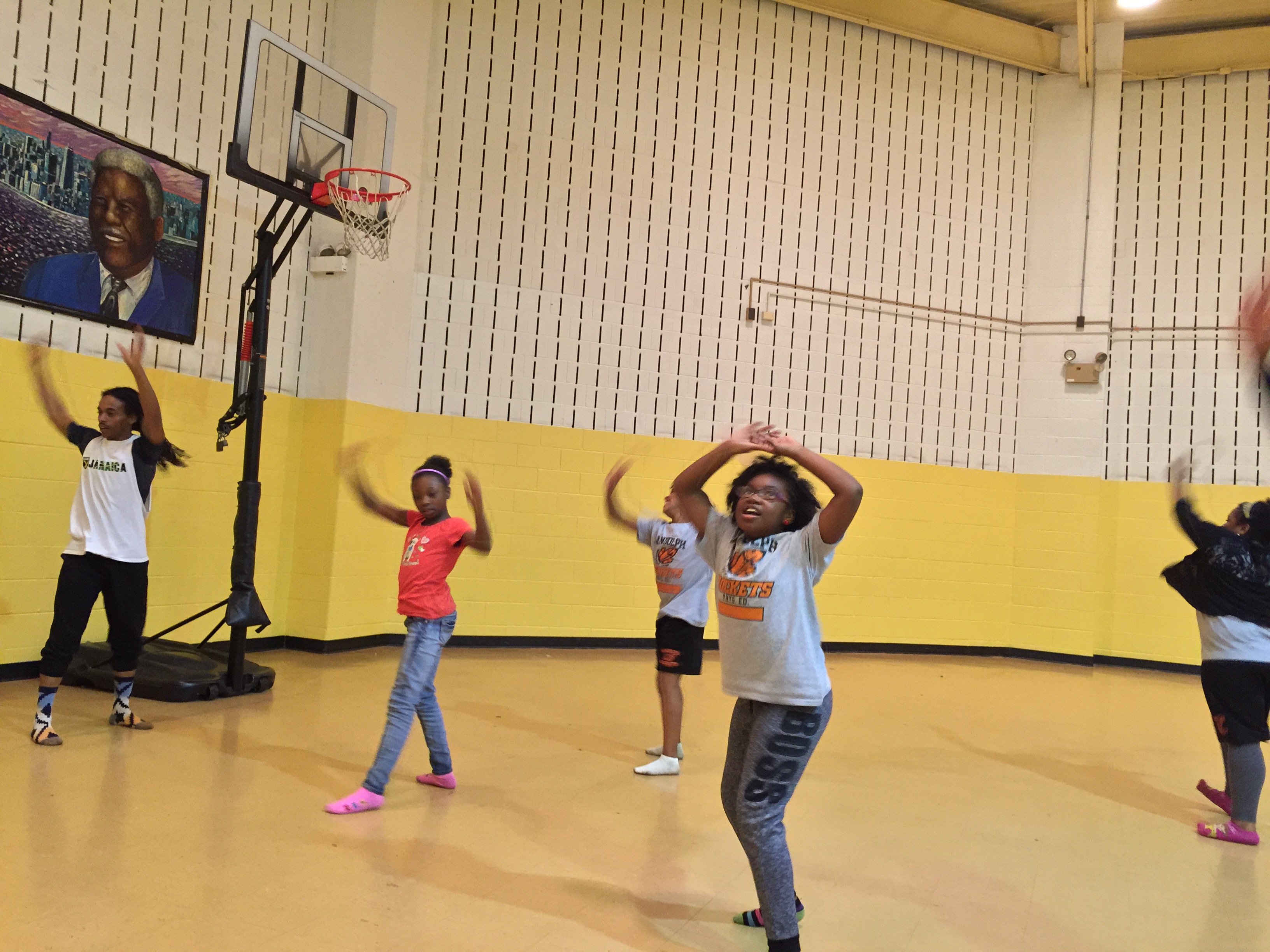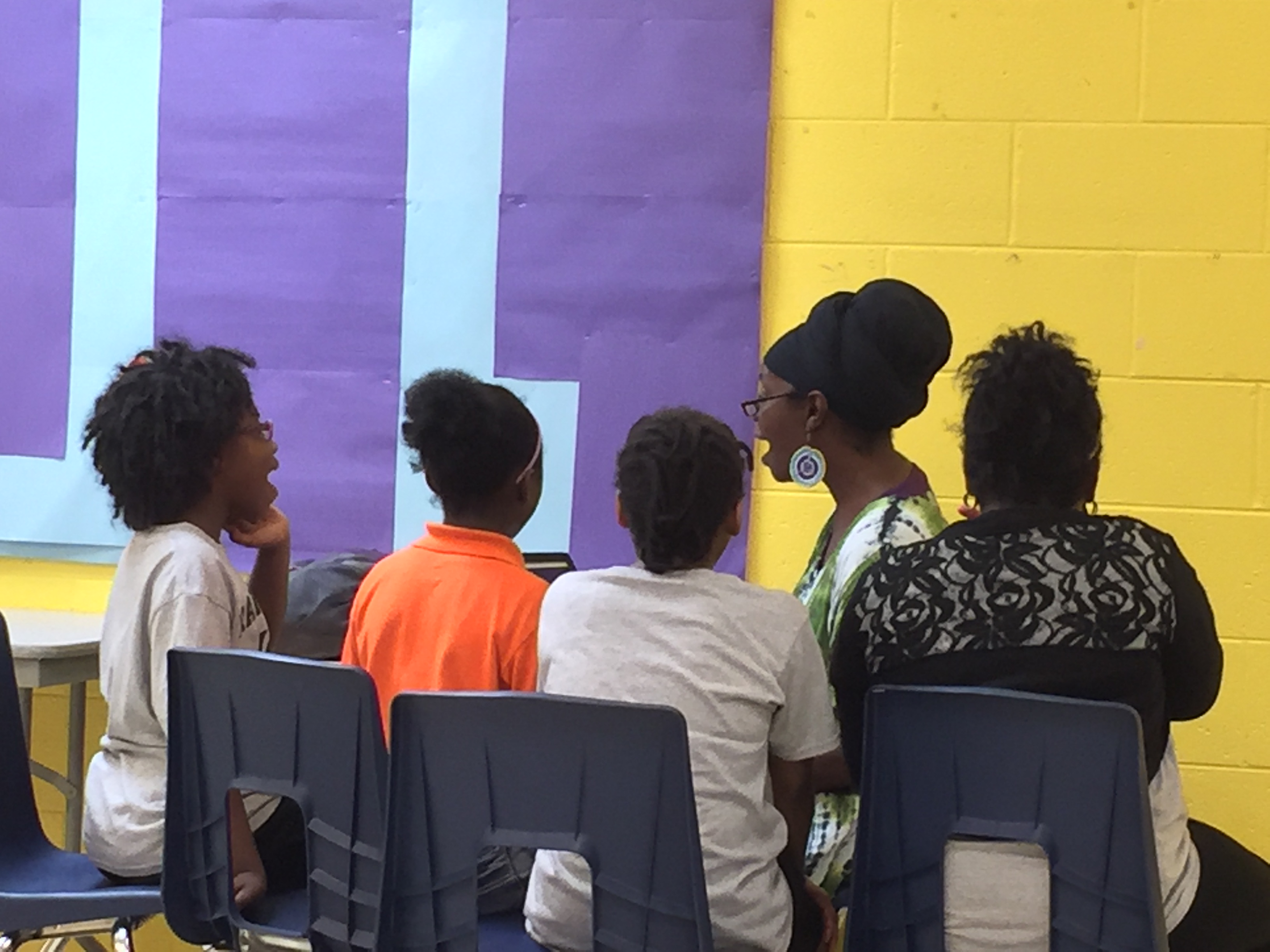It’s truly a pleasure to watch an arts program blossom the way this year’s programming has at Randolph Elementary in Chicago’s West Englewood community. Providing in-depth artist-in-residence programs to give students a prolonged taste of what it is to participate and grow in the arts is something we always aspire to. In this case, 5th through 8th graders in Randolph’s after-school program have enjoyed access to three residencies, and all three reinforce each other in ways that advance education, inspiration, and students’ sense that they, too, are artists.
Dance artist Amansu Eason has a background in dance forms from ballet to modern, as well as an academic background in Africana Studies. He has been working with Randolph’s 5th-8th graders this fall to answer the question “Why do we dance?” through the lens of movements associated with the African Diaspora. Starting with basic body awareness and dance vocabulary, and building through a conversation about dance as a form of communication that became culturally central to the African Diaspora, Amansu’s students are gaining insights into art’s effects on history and society. Not to mention the dance moves that they’re perfecting.

Musician and storyteller Zahra Baker is a master of art forms including the African American a cappella tradition, and her work at Randolph has centered on developing an African American Choral Ensemble. This residency is largely about teamwork: Zahra began the residency with a circle discussion of attributes that each individual student wanted to bring to the group. Through ice-breakers and discussions, and through learning new songs and reviewing old ones each week (including polyrhythmic choral works, work songs, freedom songs, African protest songs, and African American vocal music), students built a trusting community as well as a musical repertoire. The program has grown from 5 students to 25, and Zahra has implemented monthly talent shows that give students a chance to perform uplifting solos, compliment each other after each performance, and even play MC.
Their learning also addresses social questions like African sensibilities around community-building; Zahra’s work loops back to some of the same concepts addressed in Amansu’s residency, such as music and art as a form of communication and social commentary.
Zahra has been thrilled by the engagement and dedication of this group of students. “They sound so powerful that we often have school staff members peeking in to see who is singing!” Zahra said. “I am so excited to be a part of their musical development and to provide a safe creative space for them to discover the talents of their peers and themselves.”

Finally, teaching artist Kevin Brown is an expert on rhythm who worked with Randolph’s after-school students this fall to help them understand how rhythm is woven into the arts and life. They used percussion to do this; as a Be the Groove musician and dancer, Kevin works largely with everyday objects to create sound, so his Randolph students used buckets and drumsticks to achieve rhythmic learning. Kevin’s residency not only brought music and movement together through the binding element of rhythm, but it built self-confidence through solo performance and teambuilding through collaborative music – capacities that are being reinforced for these students in all three residencies.

Kevin, Amansu, and Zahra have been working with many of the same ideas: Confidence, teamwork, and the arts as cultural communication and social commentary, to name just a few. Each of these residencies and ideas is invaluable to young learners. Provided together, their impact reaches new heights.
